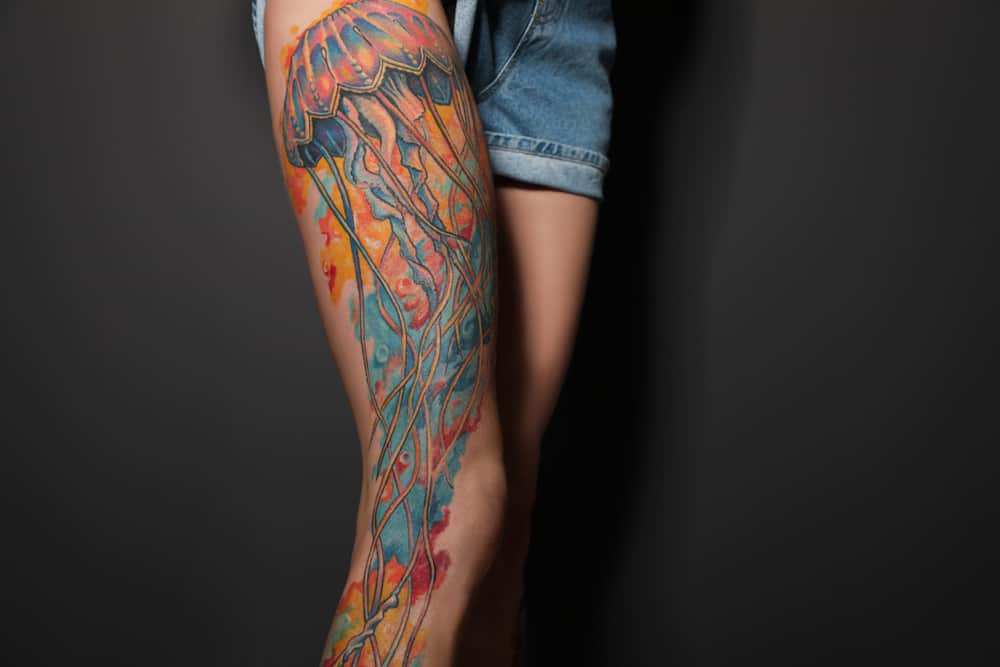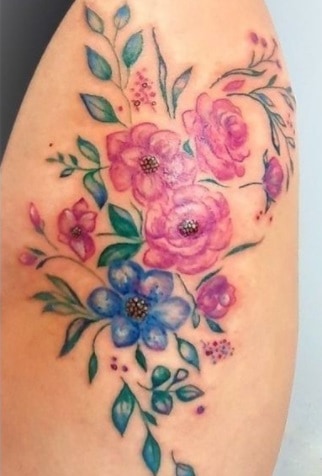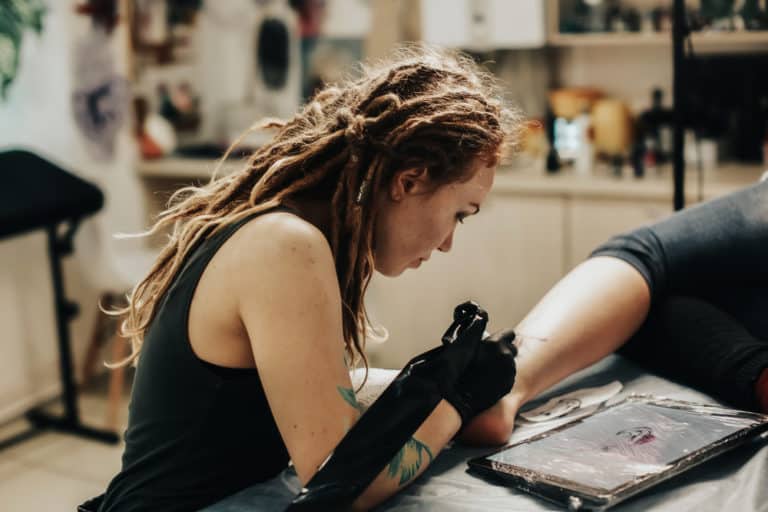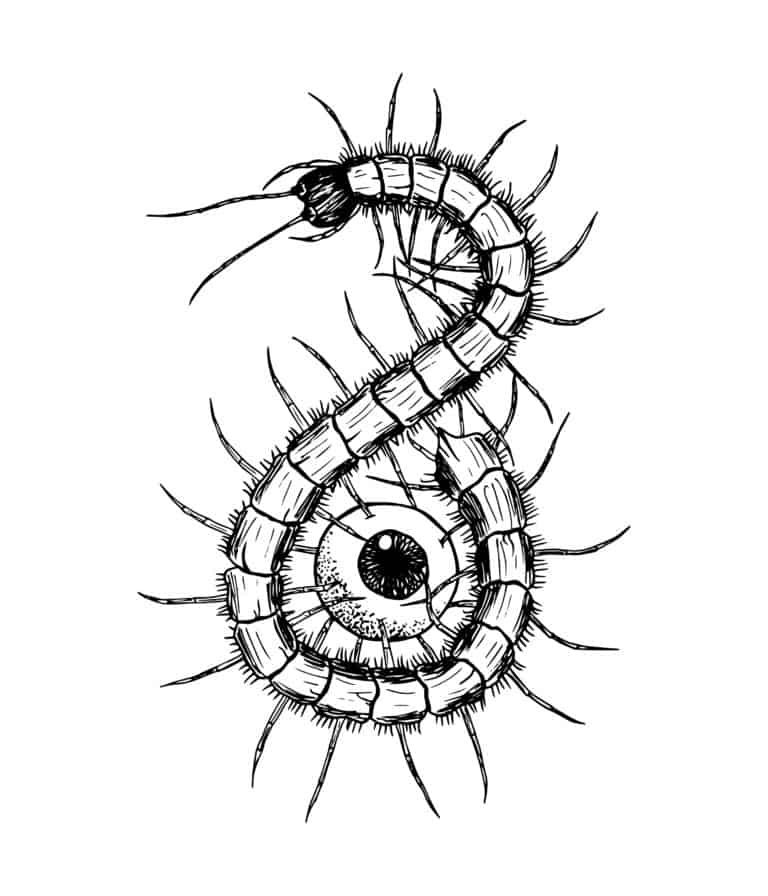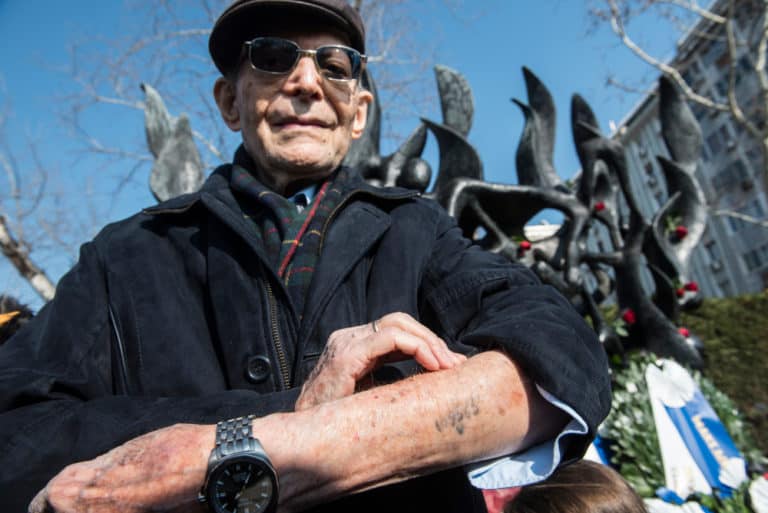What Is A Leg Sleeve Tattoo Called?
If a tattoo that covers your arm from shoulder to wrist is called a “sleeve”, then surely there’s a different term used to describe a tattoo that covers your leg from thigh to ankle. So, what is a leg sleeve tattoo called? We have the answer to help you avoid any confusion.
Although people think that a tattoo covering your arm is called a sleeve in reference to a shirt sleeve, it refers to the definition of a sleeve, like the protective cardboard covering a coffee cup or record (i.e., a cover). So, the appropriate term for a leg sleeve tattoo is simply a “leg sleeve”.
Suppose you’re looking to get a leg sleeve tattoo. In that case, you will want to avoid any potential confusion between yourself and your tattoo artist, so it’s important to use the right terminology to describe exactly what you want.
This article will help you understand what a leg sleeve tattoo is, where the name originates from, and other useful information.
What Are Tattoo Sleeves On Legs Called?
A sleeve tattoo (also known as a tattoo sleeve) is a single tattoo or a collection of several tattoos that covers a person’s arm with a unified theme. Many people consider sleeve tattoos to be called sleeves in reference to the sleeves on articles of clothing that wholly or partly cover a person’s arm.
Therefore, logic might lead them to believe that they’d have to use similar terminology that we would use for trousers or pants (i.e., a “leg”). However, you could also use the word “sleeve” to refer to the cardboard sleeve around a cup of coffee that allows you to handle it while it’s hot or the protective cardboard that covers a record, CD, or DVD.
Therefore, when you talk about a tattoo that covers your entire leg, from your thighs to your ankles, it can also be called a sleeve tattoo and, to distinguish it from a sleeve that covers the arm, the correct terms to use would be “leg sleeve”.
The term can also be used as a verb, where “being sleeved” refers to having one’s entire arm or leg tattooed.
Sleeves most commonly come in the form of full sleeves, which is when the arm is completely covered in tattoos from shoulder to wrist, but you also get half-sleeves, which cover the arm in tattoos from shoulder to elbow or wrist to elbow.
You also get a quarter sleeve covering the area between the shoulder and halfway to the elbow. People opt for quarter sleeves when they want a tattoo hidden under a short sleeve t-shirt. There is also a form of sleeve tattoo that runs beyond the shoulder and onto the chest, known as a Hikae, which is a style that originates in Japan.
Also, note that a sleeve doesn’t necessarily have to be a single unified piece and can be a collection of smaller tattoos tied together with a single background or motif.
How Long Does A Leg Sleeve Take To Complete?
A full leg sleeve covers a very large surface area and, therefore, will take a very long time to complete and cannot be done in a single session. You can expect it to take at least 30 to 40 hours in total, while some of the more detailed, intricate designs can take even longer. Some artists estimate that a full leg sleeve will take between 40 and 60 hours to complete.
Tattoo artists will break the inking up into multiple sessions, which can be spread out over days, weeks, months, or even years to allow for healing time and your budget constraints (did we mention that they can be incredibly expensive too?)
So, if you’re considering getting a full leg sleeve, be prepared not only to practice some patience but to part ways with a hefty sum of money. Bear in mind that your leg has roughly double the surface area of your arm, so the artist will have a lot to do, especially if it’s a single, unified piece.
Other Tattoo Lingo/Jargon
Now that you know what a leg sleeve tattoo is called, some of the details behind where the name comes from and the process it takes to get one, we have put together a list of some tattoo terms that you may not be familiar with and that will help you describe the vision behind your next tattoo to your tattoo artist.
American Traditional: A popular tattoo style that uses black outlines, bold but not intricate coloring, and iconic imagery such as wolves, birds, snakes, etc.
Body Suit: This refers to a tattoo (or tattoos) covering most of a person’s body.
Canvas/Skin: This refers to the client about to get tattooed.
Cover-up: This refers to a tattoo that has been designed on top of another tattoo that covers it up by camouflaging it with strategic coloring and linework.
Dotwork: This tattoo style exclusively uses small dots to create a design, such as a stipple portrait.
Flash: This refers to tattoos that the tattoo artist has already designed, which clients can choose from in a book and request (typically at a lower price) or use as a template for a similar design.
Geometric: Another tattoo design that uses only lines and geometric shapes instead of shading and dotwork.
Illustrative: A tattoo style combines American Traditional and realism to depict illustration-like designs using outlines and shading.
Pin-Up: Although not necessarily in line with it, pin-ups are also similar to the American Traditional style and depict images of women
Realism: A tattoo style that depicts images as seen in real life. Commonly used for portraits, realism focuses more on shading than linework.
Stick and Poke: A tattooing style where a single needle is dipped in ink and poked into the skin repeatedly, unlike tattoos administered through rotary tattoo machines or coil tattoo machines.
Traditional Japanese (Irezumi): A tattoo style that uses bold outlines, minimal shading, and imagery such as koi fish, mythical beasts, flowers, and characters from Japanese folklore. It was popularized in Japan and is commonly used by people in Yakuza crime syndicates.
Conclusion
Leg sleeve tattoos have become incredibly popular over the years and are a great way to add a feature tattoo if you’re an enthusiast that wants a massive piece that requires a large surface area.
However, if you’re considering a leg sleeve, it is important to note that the artwork can take an incredibly long time to complete and will cost a lot of money. But, if you have familiarized yourself with the correct vocabulary, you will find it easy to convey the vision you have for your tattoo to the tattoo artist.
Sources
- Tattoo Lingo | Inked Mag
- What are tattoo sleeves on legs called? | Bodys Jewelry Reviews
- What Is A Tattooed Leg Called | Skin Ink
- Sleeve tattoo | Wikipedia
- If an arm covered in tattoos is called a sleeve, what is a leg covered in tattoos called? Is it called a sleeve tatoo or something else? | Quora
- how long in between starting and finishing a big sleeve? | Last Sparrow Tattoo

